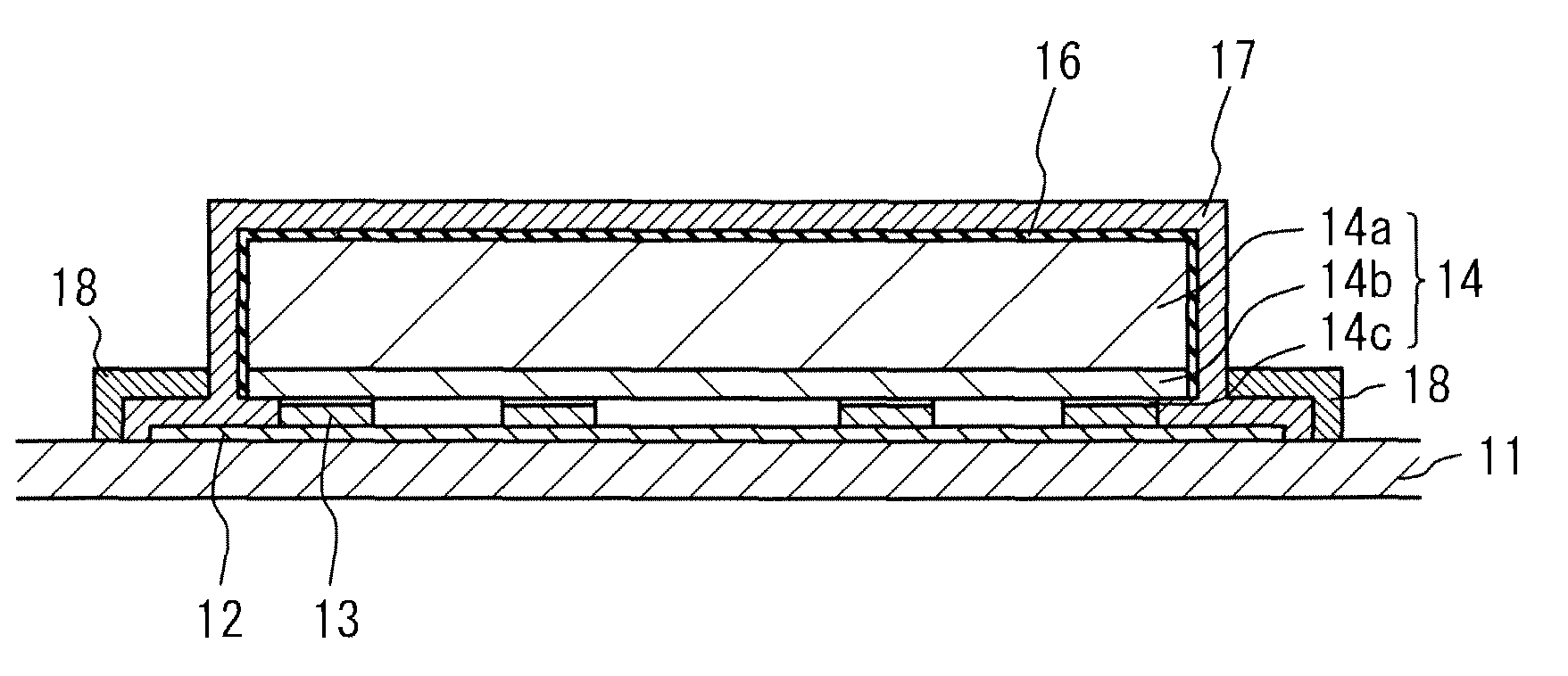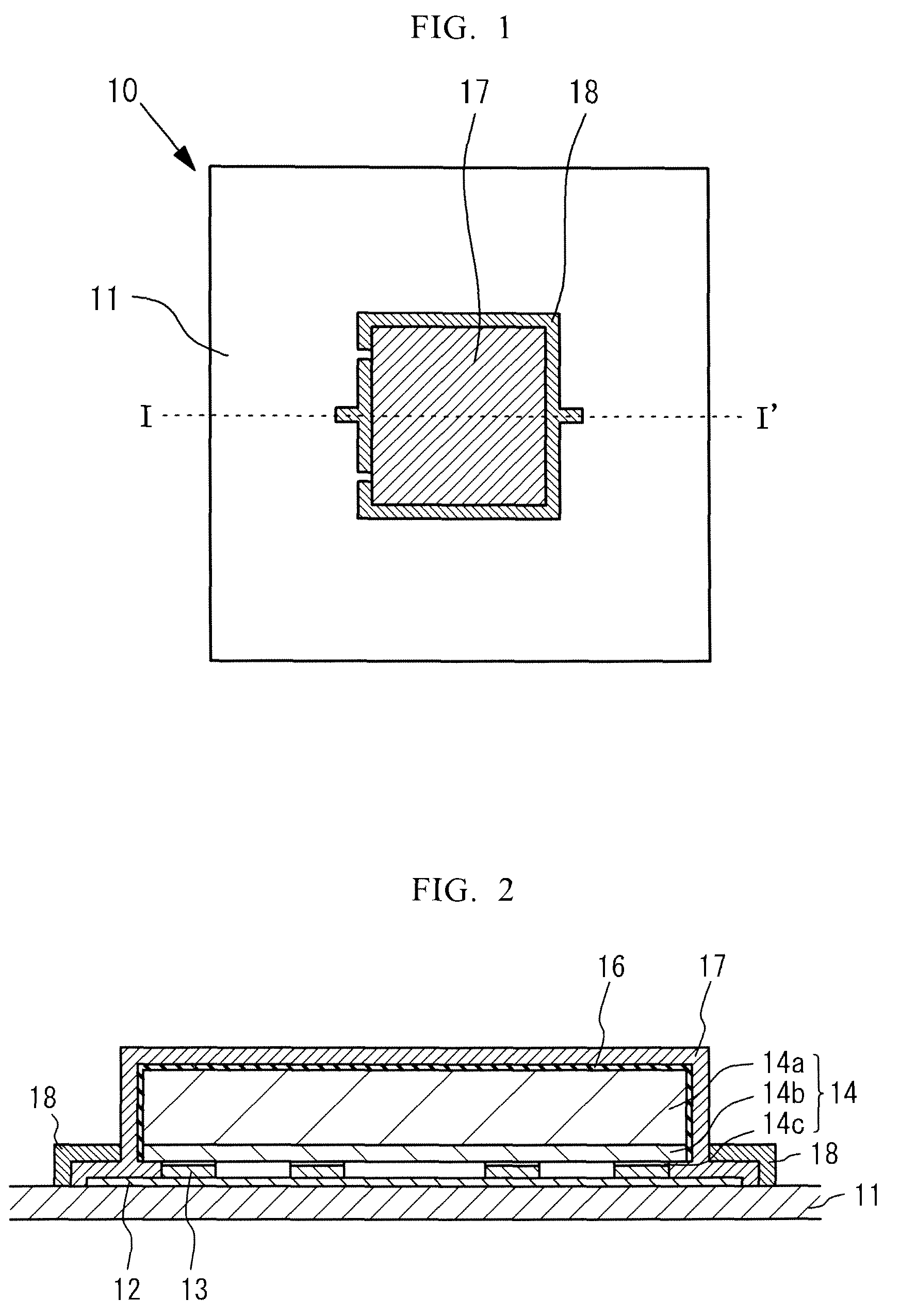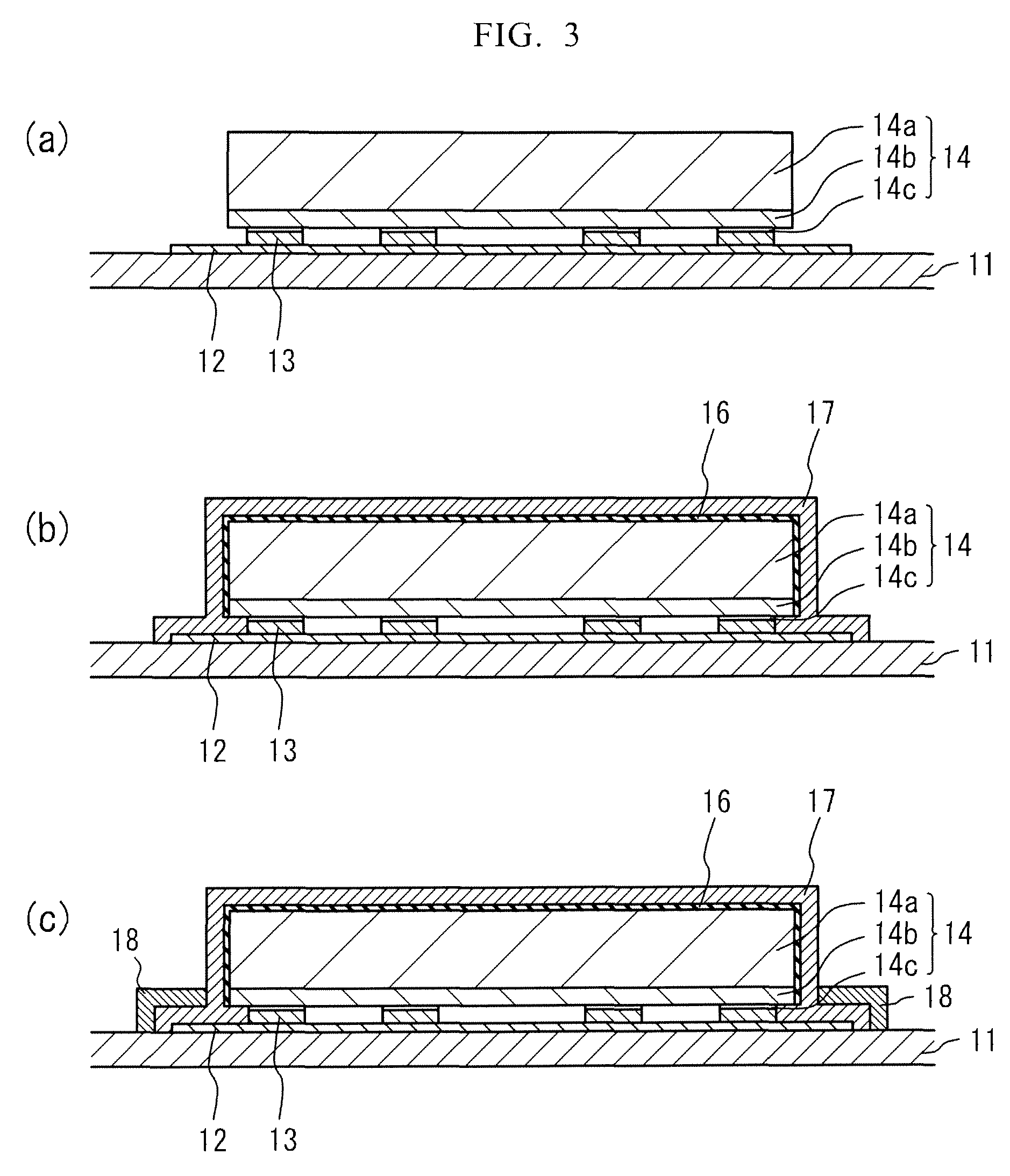Light emitting device and method for manufacturing the same
a technology of light emitting device and manufacturing method, which is applied in the direction of semiconductor/solid-state device manufacturing, semiconductor devices, electrical devices, etc., can solve the problems of uneven light emission, low light extraction efficiency, and difficult to obtain uniform white light, and achieve uniform light emission and light extraction efficiency. satisfactory
- Summary
- Abstract
- Description
- Claims
- Application Information
AI Technical Summary
Benefits of technology
Problems solved by technology
Method used
Image
Examples
example 1
[0088]FIG. 9 is a schematic sectional view showing a light emitting device according to Example 1. The light emitting device includes the substrate 11 including the conductive portion 12, the bonding members 13, the light emitting element 14, the phosphor layer 17, and the reflection layer 18.
[0089]Alumina ceramics are used for forming the substrate 11 and Au is used for forming the conductive portion 12. The conductive portion 12 is partially embedded in the substrate 11. The conductive portion 12 functions as a terminal for electrically connecting the light emitting element 14 with the external power supply because the conductive portion 12 is exposed on a rear surface of the substrate 11.
[0090]The light emitting element 14 is connected to the conductive portion 12 by using bumps made of Au as the bonding members 13. The light emitting element 14 includes the substrate 14a made of sapphire having the insulating property and the semiconductor layer 14b formed on the substrate 14a. ...
example 2
[0094]FIG. 1 is a schematic sectional view showing the light emitting device according to Example 2. Example 2 differs from Example 1 in that Al is used for forming the covering layer 16, the covering layer 16 is reformed so as to have the insulating property after forming the phosphor layer 17, and TiO2 (having an average particle diameter of 0.3 μm) is used for forming the reflection layer 18. In the present Example, before forming the reflection layer 18, the covering layer 16 is oxidized to reform the covering layer 16 so as to have the insulating property by, for example, a method in which the covering layer 16 is heated under the water-vapor atmosphere. Accordingly, the reflection layer is not formed on the phosphor layer 17 formed on the light emitting element 14 through the covering layer 16 but the reflection layer 18 is formed only on the phosphor layer 17 formed on the conductive portion 12.
[0095]In the present Example, it is also possible to obtain a light emitting devic...
example 3
[0096]Example 3 differs from Example 1 in that Sn—Ag—Cu is used as the bonding members 13 and Mg is used for forming the covering layer 16. The phosphor layer 17 has an average particle diameter of the phosphor particles of 5 μm and is formed by the electrostatic coating method. BaSO4 (having an average particle diameter of 0.5 μm) is used for forming the reflection layer 18. The other points are identical to those of Example 1.
[0097]In the present Example, it is also possible to obtain a light emitting device that causes less uneven light emission and also has improved light extraction efficiency.
PUM
 Login to View More
Login to View More Abstract
Description
Claims
Application Information
 Login to View More
Login to View More - R&D
- Intellectual Property
- Life Sciences
- Materials
- Tech Scout
- Unparalleled Data Quality
- Higher Quality Content
- 60% Fewer Hallucinations
Browse by: Latest US Patents, China's latest patents, Technical Efficacy Thesaurus, Application Domain, Technology Topic, Popular Technical Reports.
© 2025 PatSnap. All rights reserved.Legal|Privacy policy|Modern Slavery Act Transparency Statement|Sitemap|About US| Contact US: help@patsnap.com



